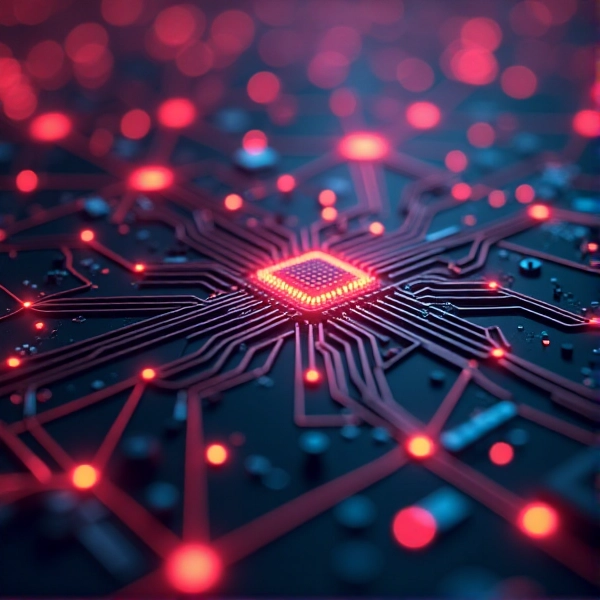Understanding Neural Networks: The Building Blocks of AI

Neural networks are at the heart of artificial intelligence (AI), enabling machines to process data, recognize patterns, and make intelligent decisions. From powering voice assistants like Siri and Alexa to driving advancements in healthcare and finance, neural networks form the foundation of modern AI applications.
Table of Contents
This comprehensive guide explores what neural networks are, how they work, and their applications, offering a solid understanding of this transformative technology.
What Are Neural Networks?
A neural network is a computational system inspired by the structure and functioning of the human brain. It consists of interconnected layers of nodes (or neurons) that process data and learn patterns to perform tasks like classification, prediction, and decision-making.
Key Characteristics of Neural Networks:
- Layers: Composed of input, hidden, and output layers.
- Connections: Nodes in one layer connect to nodes in the next, forming a weighted network.
- Learning: Adjusts weights through training, improving its accuracy over time.
Neural networks power various AI technologies, from image recognition to natural language processing.
How Do Neural Networks Work?
At a fundamental level, neural networks mimic how human brains process information. Here’s a breakdown of the process:
1. Input Layer:
This layer receives raw data, such as images, text, or numerical inputs. Each input is represented as a numerical value.
2. Hidden Layers:
These layers perform the heavy lifting by applying mathematical operations to the input data. Each hidden layer uses activation functions to determine how strongly a neuron responds to inputs.
3. Output Layer:
The final layer produces predictions or classifications based on the data processed in the hidden layers.
4. Training and Optimization:
Using a process called backpropagation, the network adjusts its weights to minimize errors. This iterative process improves the model’s accuracy over time.
Types of Neural Networks
Neural networks come in various forms, each suited to specific tasks:
1. Feedforward Neural Networks (FNNs):
- Description: The simplest type, where data flows in one direction, from input to output.
- Applications: Image classification, simple predictions.
2. Convolutional Neural Networks (CNNs):
- Description: Specialized for processing grid-like data such as images.
- Applications: Image recognition, object detection, facial recognition.
3. Recurrent Neural Networks (RNNs):
- Description: Designed for sequential data, with feedback loops to retain information.
- Applications: Time-series forecasting, language modeling, speech recognition.
4. Generative Adversarial Networks (GANs):
- Description: Consist of two networks (generator and discriminator) competing to improve data generation.
- Applications: Creating realistic images, video generation, data augmentation.
5. Transformer Networks:
- Description: Advanced networks that use self-attention mechanisms.
- Applications: Natural language processing (e.g., GPT-4, BERT).
Applications of Neural Networks
Neural networks have a wide range of real-world applications, revolutionizing industries and enhancing capabilities:
1. Healthcare:
- Disease diagnosis through medical imaging.
- Drug discovery and personalized medicine.
2. Finance:
- Fraud detection using pattern recognition.
- Stock market prediction and algorithmic trading.
- Object detection and navigation.
- Decision-making in self-driving cars.
4. Natural Language Processing (NLP):
- Language translation tools.
- Sentiment analysis for customer feedback.
5. Gaming:
- AI-powered game development.
- Realistic non-player character (NPC) behavior.
How Neural Networks Learn
The learning process of a neural network involves several key components:
1. Training Data:
High-quality datasets are crucial for training neural networks. The larger and more diverse the data, the better the model performs.
2. Loss Function:
Measures the difference between predicted and actual outputs. The goal is to minimize this error.
3. Optimizers:
Algorithms like stochastic gradient descent (SGD) or Adam are used to adjust weights and biases during training.
4. Epochs and Iterations:
Training occurs in multiple rounds (epochs), with each round refining the model’s accuracy.
Advantages of Neural Networks
- Versatility: Applicable to a wide range of tasks and industries.
- Scalability: Handles large datasets effectively.
- Accuracy: Learns complex patterns, improving over time.
- Automation: Reduces the need for manual intervention.
Challenges of Neural Networks
Despite their benefits, neural networks have limitations:
- Data Dependency: Requires large, high-quality datasets for effective training.
- Computational Costs: Demands significant computational power and resources.
- Black-Box Nature: Difficult to interpret how decisions are made.
- Overfitting: Risks memorizing training data instead of generalizing patterns.
The Role of Neural Networks in AI Development
Neural networks are integral to AI’s growth, enabling breakthroughs in areas like deep learning and machine learning. They serve as the backbone for systems capable of solving complex problems and driving innovation.
Future Trends in Neural Networks
- Neuromorphic Computing: Mimicking brain-like structures for energy-efficient AI.
- Edge AI: Deploying neural networks on devices with limited computational resources.
- Explainable AI (XAI): Enhancing transparency in neural network decision-making.
- Transfer Learning: Utilizing pre-trained models for faster deployment.
How to Get Started with Neural Networks
For beginners eager to explore neural networks, here’s a roadmap:
- Learn the Basics: Familiarize yourself with concepts like neurons, layers, and activation functions.
- Choose a Framework: Start with tools like TensorFlow or PyTorch for hands-on practice.
- Experiment with Pre-Built Models: Modify existing models to understand their workings.
- Join Online Communities: Engage with forums, courses, and projects for continuous learning.
Conclusion
Understanding neural networks is essential for anyone interested in AI. These powerful systems replicate the human brain’s learning capabilities, driving advancements in industries worldwide. Whether you’re a developer, researcher, or enthusiast, delving into neural networks opens the door to limitless possibilities.
By embracing this technology, you contribute to shaping the future of AI. Start exploring neural networks today and unlock their potential to transform industries and solve real-world challenges.
